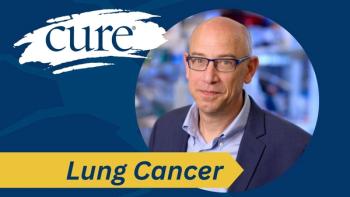
Melanoma Education is Key to Saving Lives
A melanoma expert addresses the findings of two studies on the disease in children, adolescents and young adults, and shares ways in which they can protect themselves.
The incidence of melanoma has increased to the head and neck by more than 50% in children, adolescents and young adults over the past nearly 20 years. However, melanoma rates for this same age group are falling overall.
These findings are according to two recent studies — one conducted by researchers at St. Louis University and the other from researchers at the University of Washington.
In the first study, researchers examined populations in the United States and Canada who had received a head and neck melanoma diagnosis between 1995 and 2014. The more than 12,000 patients included in the study ranged in age from infant to 39 years old.
They found that melanoma to those body parts increased by 51.1%. Most cases (54.6%) occurred in males and 91% of cases were from the U.S. In both countries, the skin of the neck and scalp was the area where most head and neck melanoma were diagnosed. These sites are linked to worse prognosis, explained the researchers.
“The head and neck have more blood vessels and lymph nodes than other parts of the body and melanomas can spread, so it may be more easy to spread when it begins on the head, neck or scalp than other areas,” Dr. Natalie Curcio, a dermatologist practicing in Nashville and spokesperson for the
Patients in this study were least diagnosed with melanoma on the skin of the lip.
However, a second study found that in the same age group, the overall rate of melanoma is declining. The researchers reviewed nearly 990,000 cases of invasive melanoma from the National Program of Cancer Registries—Surveillance Epidemiology and End Results United States Cancer Statistics database. The study showed that from 2006 to 2015, there has been a 4% to 4.5% decrease in the number of cases.
“Indoor tanning is very common amongst young adults and it is known to significantly increase one’s risk of developing melanoma,” Curcio said. “But we are seeing changes for the better. Indoor tanning among U.S. high school students has decreased by 53% between 2009 and 2015, and as of today, there are 18 states that now prohibit people younger than 18 from using indoor tanning devices. So people are much more aware of the sudden dangers than they were 40 years ago. People are getting screened more for skin cancer. In addition, I think people are realizing that everyone needs sunscreen regardless of their skin tone.”
Melanoma most often resembles moles, explained Curcio, and one-third of melanomas develop from existing moles. They can be black, brown, white, pink, purple or blue in color, so it’s important for people to get screened by a dermatologist once a year. People should also be educated in the
“99% of all cases of melanoma are curable if diagnosed and treated early but, if left untreated, the disease can spread widely leading to disfigurement and even death, so early detection is key before the melanoma has the chance to spread,” Curcio said. “The survival rate drops to 63% when it reaches the lymph nodes and down to 20% when it spreads to distant organs.”
Education should start at the home and people should lead by example, Curcio explained. People should apply sunscreen to their children and themselves, cover up with clothing and wear a hat and sunglasses when they are outdoors.





